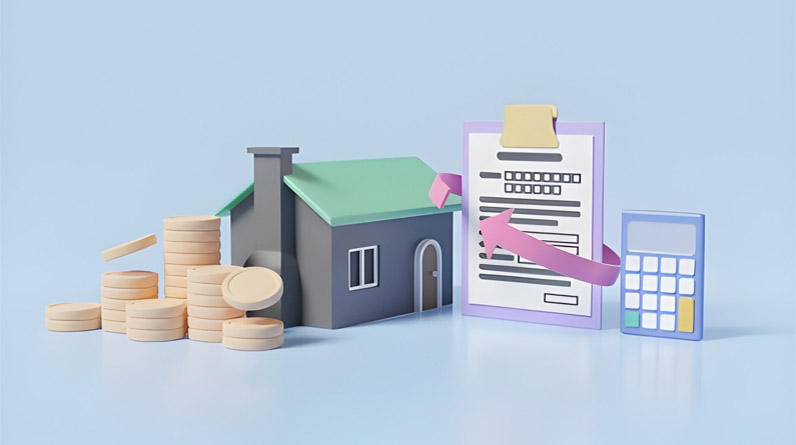Let’s be honest: creating a budget is the easy part. You spend an enthusiastic Sunday afternoon mapping out your income, expenses, and savings goals. You feel motivated and in control. Then, two weeks later, your budget lies abandoned like a forgotten New Year’s resolution.
Sound familiar?
The problem isn’t that you lack discipline or financial knowledge. The problem is that most budgets are built to fail from the start. They’re too restrictive, too complicated, or completely disconnected from how you actually live your life.
This guide will show you how to create a personal budget that works with your lifestyle, not against it—one you’ll actually maintain for the long haul.
Why Most Budgets Fail (And How to Avoid It)
Before we dive into budget creation, let’s understand why budgets typically don’t last past the first month.
The Three Budget Killers
| Budget Killer | What It Looks Like | The Fix |
|---|---|---|
| Unrealistic Restrictions | Cutting entertainment spending from $300 to $50 overnight | Make gradual reductions; allow room for enjoyment |
| Forgetting Irregular Expenses | Not planning for birthdays, car maintenance, or annual subscriptions | Review your calendar and build these into your budget |
| No Clear Purpose | Budgeting because you “should” without specific goals | Define your “why” before you start |
The key takeaway? A sustainable budget requires self-awareness, flexibility, and purpose. Let’s build one that has all three.
Step 1: Know Your Financial Reality (Not Your Fantasy)
You can’t budget money you don’t have, and you can’t cut expenses you haven’t identified. Start with brutal honesty about your current financial situation.
Calculate Your True Take-Home Income
Begin with your after-tax income—the actual amount that hits your bank account. This includes:
- Your regular paycheck after taxes and deductions
- Side hustle or freelance income
- Investment returns or rental income
- Any other consistent money sources
If your income varies monthly, calculate an average from the past three to six months and use the lower end as your baseline. This protects you during lean months.
Track Every Dollar for 30 Days
This might sound tedious, but it’s non-negotiable. For one full month, record every single expense. Use whatever method works for you—a budgeting app, a spreadsheet, or even a notebook.
Pay special attention to:
- Micro-expenses: That $6 morning smoothie happens 20 times per month ($120)
- Subscription creep: Streaming services, gym memberships, app subscriptions
- Emotional spending: Notice when you shop (stressed? bored? celebrating?)
Many people discover they’re spending 20-30% more than they estimated once they actually track their expenses.
Step 2: Define Your Purpose (Your Budget’s “Why”)
Here’s a powerful reframe: your budget isn’t about restriction—it’s about directing your money toward what matters most to you.
Set Goals That Actually Motivate You
Generic goals like “save more money” don’t work. Instead, get specific:
- Short-term (1-6 months): Save $1,200 for a weekend getaway
- Mid-term (6-24 months): Build a $5,000 emergency fund
- Long-term (2+ years): Save $30,000 for a home down payment
Pro tip: Start with smaller goals first. Achieving a $500 savings milestone in two months provides positive reinforcement that keeps you motivated for bigger targets.
Create Visual Reminders
Make your goals tangible by creating a vision board, savings tracker, or progress chart. Seeing your progress visually activates the reward centers in your brain and strengthens your commitment.
Step 3: Choose a Budgeting Method That Fits Your Personality
There’s no universally “correct” budgeting system. The best method is the one you’ll actually use consistently.
The 50/30/20 Rule (For Simplicity Seekers)
This straightforward approach divides your after-tax income into three categories:
- 50% for Needs: Housing, utilities, groceries, transportation, insurance
- 30% for Wants: Dining out, entertainment, hobbies, shopping
- 20% for Savings and Debt: Emergency fund, retirement, extra debt payments
Best for: People who want a simple framework without detailed tracking.
Zero-Based Budgeting (For Detail-Oriented Planners)
With this method, every dollar of income gets assigned a specific job. Your formula looks like this:
Income – Expenses = $0
This doesn’t mean spending everything—it means intentionally allocating everything, including savings and investments.
Example:
- Monthly income: $4,000
- Rent: $1,200
- Groceries: $400
- Transportation: $300
- Utilities: $150
- Entertainment: $250
- Savings: $600
- Emergency fund: $400
- Debt payment: $500
- Miscellaneous: $200
- Total: $4,000 (Zero remaining)
Best for: People who want complete control and don’t mind detailed planning.
The Envelope System (For Hands-On Spenders)
Allocate cash into physical or digital envelopes for specific categories. When an envelope is empty, you stop spending in that category until next month.
Best for: Visual learners and those who overspend with credit cards.
Step 4: Automate Everything Possible
Willpower is a limited resource. Remove decision-making from the equation by automating your financial life.
What to Automate
- Savings transfers: Move money to savings on payday before you can spend it
- Bill payments: Eliminate late fees and mental load
- Investment contributions: Set up automatic retirement or investment deposits
- Debt payments: Always pay at least the minimum, automatically
One study found that people who automate their savings save 2-3 times more than those who manually transfer funds.
Step 5: Build in Flexibility and Fun Money
Here’s the secret successful budgeters know: sustainability beats perfection every time.
The “Budget-Friendly Splurge” Category
Allocate 5-10% of your budget for guilt-free spending. This might be:
- Your daily coffee habit
- Streaming service subscriptions
- Occasional impulse purchases
- Hobby expenses
By building in permission to enjoy your money, you prevent the deprivation mindset that leads to budget-busting binge spending.
Create a Buffer for Life’s Curveballs
Always include a “miscellaneous” category of 5-10% for unexpected expenses. Car repair, medical co-pay, or forgotten birthday gift? Your buffer absorbs these shocks without derailing your entire budget.
Step 6: Review and Adjust Monthly (Not Daily)

Your budget is a living document, not a prison sentence.
The Monthly Budget Review
Set a recurring calendar reminder to review your budget. Ask yourself:
- Which categories did I overspend in?
- Where did I have money left over?
- Have my priorities or circumstances changed?
- What adjustments would make this more sustainable?
Important: Don’t check your budget obsessively throughout the month. Trust your system and review at predetermined intervals to avoid budget fatigue.
Step 7: Use Psychological Tricks to Your Advantage
Understanding how your brain processes spending helps you make smarter decisions.
The “Sleep On It” Rule for Big Purchases
For any non-essential purchase over $100, wait one week before buying. If you’ve forgotten about it after seven days, you didn’t really need it.
Connect Purchases to Your Labor
Calculate your hourly rate and view purchases through this lens:
Example: If you earn $27.50 per hour after taxes:
That $220 concert ticket = 8 hours of work
That $55 dinner out = 2 hours of work
This mental reframe helps you evaluate whether something is worth the labor it represents.
Try a No-Spend Challenge
Once per quarter, commit to a 7-day no-spend challenge where you only pay for absolute necessities. This resets your spending habits and builds budget muscle memory.
Step 8: Celebrate Your Wins
Budgeting success isn’t just about reaching the finish line—it’s about acknowledging progress along the way.
Celebrate when you:
- Stick to your budget for a full month
- Reach a savings milestone
- Pay off a credit card or loan
- Resist an impulse purchase
- Successfully navigate an unexpected expense without going into debt
Rewards don’t have to be expensive. They might be as simple as a favorite meal, a movie night, or sharing your success with a supportive friend.
Final Thoughts: Progress Over Perfection
Creating a budget you’ll actually stick to isn’t about finding the perfect system or having ironclad discipline. It’s about building a flexible framework that aligns with your values, accommodates your lifestyle, and adapts as your life changes.
Remember: your budget exists to serve you, not the other way around. If something isn’t working, adjust it. If you have a bad month, learn from it and move forward. The goal isn’t perfection—it’s progress.
Start small. Track your spending for 30 days. Choose one budgeting method to try. Automate one savings transfer. Take one step today, and you’ll be surprised how quickly your financial confidence grows.
Your future self will thank you for starting now.


